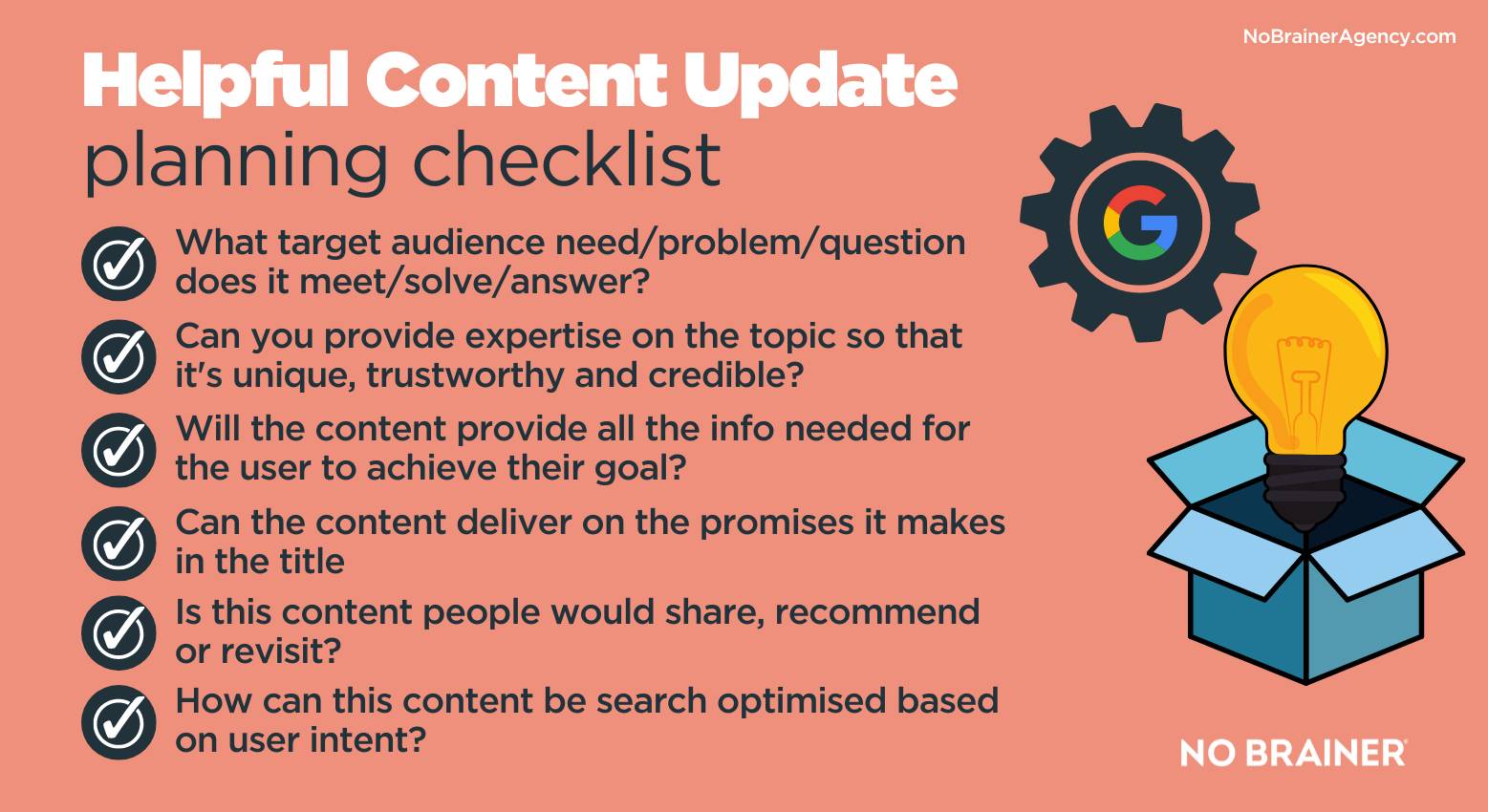The volume of content being produced across the internet continues to accelerate exponentially, whether it’s written by people or generated by AI, all of which means that search engines face an ever-increasing challenge to deliver results to users that are highly relevant, accurate and trustworthy.
Google has taken steps to try and ensure quality search results, which is where E-E-A-T comes into play.
In this guide, we’ll explain everything about Google E-E-A-T and why it’s important for every business or brand with a website. We’ll also explore how to use this framework to help strengthen your website and provide even better-quality content for your users – ensuring you’ll perform well on search.
What is Google E-E-A-T?
Google E-E-A-T is a framework that helps to signal to the search engine that a particular website offers quality content that is created by people who know what they are talking about and can be trusted on this topic.
It stands for:
- Experience
- Expertise
- Authoritativeness
- Trustworthiness
More on those elements later, but to get a true idea of what E-E-A-T is and why it’s important, we need to look at its origins and the context in which this framework has grown.
E-E-A-T for SEO: The origin story
Google Quality Rater Guidelines are a set of instructions that are provided to Google’s human evaluators, called ‘Quality Raters’. They’re used to review the quality of Google search results and help the search engine to improve and better understand what highly relevant and ‘good’ content looks like.
These guidelines were first published online for the public to view in 2014 and contained something called E-A-T, which was the case until Google updated them in December 2022, to now include E-E-A-T (adding ‘Experience’ up-front).
Essentially, E-E-A-T was designed to help ensure users are delivered valuable and reliable information when they use Google’s search engine, so the framework outlines what that looks like and provides a concept that website owners and marketers can work towards.
Together with Google’s recent Helpful Content Update(s) and core updates, all of which centre around the creation of quality content that correlates with E-E-A-T principles, it’s clear to see that Google is prioritising useful, reliable and trustworthy content.
Google’s E-E-A-T is a framework, not direct ranking factors
It’s a common misconception that producing a website that ticks as many E-E-A-T boxes as possible is a direct way to ensure your content ranks well in the search engine results pages (SERPs). However, Google representatives have repeatedly told the SEO industry that E-E-A-T is NOT a direct ranking factor. So, what is it then?
Essentially, E-E-A-T is a ‘human-friendly’ set of guidelines that tends to correlate with some of the things that Google’s algorithm really does look for in a ‘good’ website to help determine where it should rank in search results.
Instead of being a direct ranking factor for Google, E-E-A-T is actually a framework of things that make a website and its content better for the people using it rather than trying to influence the search engine.
You can read more about this and other E-E-A-T misconceptions in an article written by Ryan Jones on Search Engine Land.
The bottom line is that implementing E-E-A-T principles on your site is better for your audience and potential customers, so it is absolutely worth doing, even though it’s not a direct ranking factor or guarantee of success.
The different elements of Google E-E-A-T
So, let’s dig into the four different components of Google E-E-A-T and what they actually mean.
Experience
A piece of high-quality content should demonstrate the writer’s own real experience of the topic. This gives more credibility to any insights or suggestions in the content. As AI content tools can never have real experience of anything, this is one area in which the human writer stands out and adds real value. The experienced author can describe things that are genuine and unique; AI can only reinvent the wheel.
Expertise
Expertise and experience in the context of E-E-A-T are often thought to overlap, but there are differences. Expertise is all about the depth of knowledge that the writer can bring to the content, which helps the reader to have confidence in the accuracy of what is being communicated. Someone can be experienced in ‘doing the do’ without being an expert, and someone can have loads of theoretical knowledge but very little actual experience of using their knowledge in the context of the topic being written about. Having both is optimal!
Authoritativeness
Authoritativeness is all about the reputation of the writer or website in the relevant industry/area and the degree to which they are considered an authority in the field. Are they cited and/or linked to by other relevant and authoritative websites? Do they have an extensive body of published content already on various aspects of the wider topic? Do they have a strong personal digital brand?
Trustworthiness
All of the other components feed into developing trust with those finding and engaging with the content. If content shows experience, expertise and authority on the topic, it’s much more likely to be considered trustworthy and reliable by users. In a world that is rife with online misinformation, low-quality content and the ability for anyone to have a platform, knowing who is creating trustworthy content is more important than ever for users.
The different levels of E-E-A-T
By its very nature, E-E-A-T is a spectrum rather than being binary. The ultimate goal for every website will be to bring everything up to the highest level possible, but this can’t happen overnight because genuine E-E-A-T doesn’t have shortcuts and requires a long-term content strategy to build up your levels of E-E-A-T over time. Google’s search quality rater guidelines include some guidance on these levels and what they might look like.
Lowest E-E-A-T
If your website already creates unique and useful content for your audience, and prioritises the user experience on your site, it’s likely that you’ll already have bypassed this first level. Websites with the lowest E-E-A-T could include:
- Pages that look and feel ‘spammy’ to human users
- Pages that have a poor page experience for users
- Pages that don’t have adequate information about the website or content creator for its purpose
- Pages that seem to intentionally deceive, manipulate or cause harm to users or other groups
- Pages that include malicious downloads, scam characteristics or other things that could harm users
Lacking E-E-A-T
The most common level will be websites that lack E-E-A-T in certain areas, despite getting it right in others. It might be that the site publishes useful and unique content, but has no details on who created the content and their expertise, experience or authority in this specific area or topic.
Examples of this could include:
- A content creator reviews a product, but hasn’t got extensive experience of using that product (lack of experience)
- A content creator writes a superficial article on a topic that requires a greater level of depth and insight to be really useful (lack of expertise)
- A content creator publishes content that is not related to the website’s core topic or theme (lack of authoritativeness in the relevant area)
High level of E-E-A-T
This is a website that demonstrates all four E-E-A-T components through its high-quality content. The experience, expertise and authoritativeness shown will result in pages that are considered trustworthy.
Very high level of E-E-A-T
This is a website that not only does everything in the previous level, it also looks good to the user, provides a positive page experience and satisfies the intent of searchers. This can look different, depending on the type of website involved. For example:
- On news websites – this is likely to look like accurate, in-depth and original investigative reporting, full and accurate referencing of sources and meeting professional standards for journalism.
- On artistic websites, such as video, photography, illustrations, writing etc – this is likely to look like original and unique content that demonstrates the artist’s high level of talent/skill and effort.
- On informational websites – this is likely to look like unique, accurate, comprehensive and clearly communicated content that demonstrates the various components of E-E-A-T and meets high standards for the topic or field involved.
YMYL and E-E-A-T
Your Money or Your Life (YMYL) refers to Google’s understanding of topics and fields that can affect the health, wellbeing, happiness, safety or financial security of people. Google essentially has special rules for websites and content that fall under YMYL, which includes:
- Insurance
- Consumer finance, including banking, credit cards, loans, BNPL, pensions, investments etc
- Health, safety, wellbeing, fitness and medical advice
- Law and legal advice
- Political news
- Business news
- Civic issues, such as about voting, social services etc
- Ecommerce
Google treats websites and pages differently for YMYL topics because if the information provides poor advice, it can result in harm. This is why Google holds YMYL content to higher standards.
E-E-A-T comes into it because Google wants to ensure it delivers content that is high-quality and trustworthy for YMYL search queries, which is what E-E-A-T is all about.
How does E-E-A-T impact Google’s guidelines for content writing?
In partnership with Google’s guidelines for creating helpful content, it’s important to take E-E-A-T into account when planning and writing new content, as well as evaluating content you have already published, to see if it needs bringing up to higher standards.
Our top-line checklist can help you quickly evaluate this on pages across your website:
Can you fake E-E-A-T?
As with any changes or updates to the ways that search engines work or the guidance that they provide, some people will always look for shortcuts to try and ‘game the system’ or trick Google. For something like E-E-A-T specifically, doing things the right way takes time, effort, patience and human resource, so is Fake E-E-A-T a thing and what might it look like?
It has been known for some sites to claim they are implementing the principles of E-E-A-T under false pretences. Some of the ways in which some websites have been found to be trying to ‘fake’ E-E-A-T include:
- Creating fake authors for their content, who don’t really exist or work for the business. Often, these are accompanied by profile pictures generated by AI.
- Giving authors of site content, whether real people or fake profiles, credit for expertise or experiences that they don’t actually have.
- Labelling content as having been checked by a qualified expert or fact-checked, when it hasn’t been.
Trying to give search engines (and users) false signals is playing a very dangerous game, and recent updates and communications by Google indicate that they are serious about not rewarding this kind of activity. Google seems to be starting to tangibly penalise this type of online behaviour in their updates from autumn 2023 onwards, alongside improving their spam and low-quality content detection.
Can Google actually tell a fake author profile from a real one? Probably not in such a black-and-white sense at this time. However, Google will be able to detect that ‘real’ signals are not present in sites that are faking E-E-A-T, e.g:
- The author profile has no depth of information or relevant details of topic expertise.
- There are no links to established and active social profiles for this individual, posting on relevant topics.
- This individual is not cited as an expert or authority on the topic elsewhere online or on any other relevant and high E-E-A-T sites.
The takeaway from this is that trying to take shortcuts to establishing high levels of E-E-A-T on a website is not advisable and will likely bring more trouble and SEO pain in the future than actually taking the time to build E-E-A-T in the right way in the first place. We would say that having fake E-E-A-T on your website is worse than having no E-E-A-T at all.
How do you implement E-E-A-T in your marketing & SEO strategy?
We’ve established that there is no such thing as an E-E-A-T checklist, as there is a spectrum for E-E-A-T and so many variables for different industries and contexts, but that doesn’t mean that you can’t effectively incorporate the principles of E-E-A-T into your SEO and wider marketing strategy.
These could include:
Considering the technical aspects of E-E-A-T
As user experience is part of E-E-A-T, it’s important to look at how you can improve this with clear navigation and an intuitive menu structure, alongside fundamental technical SEO and trust-building signals such as:
- Having a valid SSL certificate in place
- Correct cookie implementations
- Accessibility across devices and for users with various different needs
- Ensuring the site is easily crawlable by search engines
- Correct formatting of sitemaps
- Using structured data/Schema when appropriate.
Complete an audit of existing content for demonstrating E-E-A-T
Auditing your existing content may be a major undertaking, depending on the size and age of your website, and your content marketing and SEO strategies to this point. This can look a bit different for every unique site, but a certain amount of manual review is needed so you can assess whether your existing pages and articles best serve your target users.
Some of the E-E-A-T red flags to look out for include thin content, where topics are covered superficially or very generically. This doesn’t demonstrate expertise on the subject.
Google’s Quality Rater Guidelines also state that pages with one or more of the below characteristics would only achieve a low E-E-A-T rating:
- An inadequate level of expertise, authoritativeness, and trustworthiness is demonstrated in the content.
- The quality of the main content is low.
- There is an unsatisfying amount of main content in relation to the purpose of the page.
- The title of the content is exaggerated, shocking, ‘clickbaity’ or misleading.
- Any ads or supplementary content on the page distract from the main content.
- There is an unsatisfying amount of website information or information about the creator of the content.
- A mildly negative reputation for a website or creator of the main content, based on extensive reputation research.
Once you have audited and flagged any existing content that seems to be letting the site down in terms of E-E-A-T, you can make a plan for reworking or replacing this content, as well as planning new content while making sure that E-E-A-T is firmly front of mind.
Demonstrating expertise in content for E-E-A-T
In a practical sense for your website content, you’ll need to look at how the brand’s expertise credentials are being demonstrated through it and whether you’re utilising external links to high-quality and high-authority sources (where information is already considered trustworthy) when appropriate. In the UK, examples of these sites could include the NHS website for health or medical references, government websites for statistics and academic reports for research information.
For blog posts or articles authored by individuals, how are they being represented on the page? Do they have an author bio box on the page that links to an author page with considerably more detail about what qualifies them to write on this kind of topic? What about links to social profiles to support their expert status and links to other content on different aspects of the wider topic to show they have depth of knowledge?
Authorship in SEO is important in relation to E-E-A-T, but creating author bios and pages isn’t enough on its own, especially in YMYL spaces.
If the YMYL piece of content has been fact-checked or reviewed by an expert, how is that being communicated on the page? For example, in an article giving information on a specific medical condition, does the page say that a named ‘medical reviewer’, with their own profile page, has checked it for accuracy?
Building authoritativeness in content
In the same way that building authority in a wider SEO sense is greatly helped by a natural and healthy backlink profile, similar principles apply to E-E-A-T. Content that is linked to by high-quality, relevant, trusted and authoritative websites gives very positive signals that the content is useful and trustworthy.
Incorporating digital PR into your SEO strategy can be a great way to achieve this over time. Using content to tell compelling stories that are also newsworthy and highly relevant is one way that digital PR can contribute to your E-E-A-T and SEO goals.
Building trustworthiness for E-E-A-T
A very clear indicator of a business’s trustworthiness is the online ratings and real user reviews they receive, so this can also be utilised to help achieve higher E-E-A-T.
Whether it’s incorporating a platform such as Trustpilot, or using your Google Business Profile reviews to help provide proof that you’re a business that can be trusted, this is a quantifiable way to demonstrate this to both users and search engines.
Measuring your website’s E-E-A-T progress
As E-E-A-T isn’t really something that can be easily or quickly measured by a specific score or a single metric or tool, proving the positive (or even negative) impact of activity that you’ve carried out to level-up in this area can be a challenge.
However, there are some trackable metrics that are likely to correlate with improving E-E-A-T on a website, so this can certainly be used as a guide.
SERP rankings
While organic search rankings are not the be-all and end-all of a good SEO strategy (ranking well is only truly useful if it impacts your bottom line, after all), improving rankings can be a good indicator that your E-E-A-T activity is having an effect. This is because Google’s perception of your website’s usefulness to your target audience is influenced by how they view the components of E-E-A-T.
Organic traffic
When rankings improve, so do organic traffic levels, so this can also be a good indicator that you’re moving the needle on your site’s E-E-A-T.
Organic conversions and other engagement metrics
Primarily, all of the E-E-A-T changes you make are for the benefit of users, which then has the knock-on effect of being great for SEO too. When it comes to the user experience once a relevant potential customer lands on your site, websites with higher levels of E-E-A-T naturally make it more likely that users will stick around and engage with your content, and hopefully convert too.
Metrics such as time on page, engagement rate and conversion rate can be a direct reflection of how good your website experience is for users and how much they trust your brand.
Summary
It’s worth remembering that E-E-A-T is just one aspect of an effective SEO strategy and while it’s important to consider how your site demonstrates experience, expertise, authoritativeness and trustworthiness throughout, there are many other elements that feed into success on organic search.
If you’re looking for some help with improving your website’s E-E-A-T levels, or want some advice about your wider SEO strategy, we’d love to hear from you. Get in touch using the form below.









